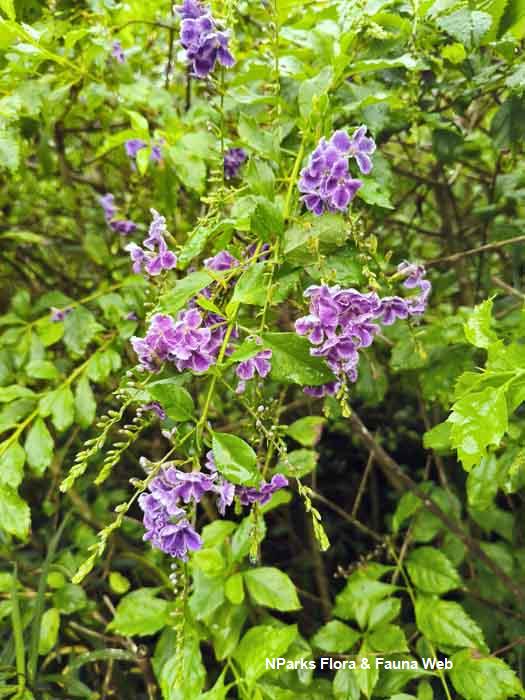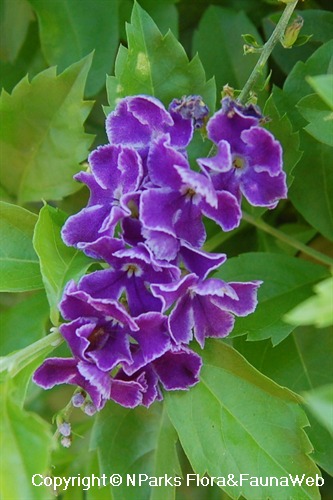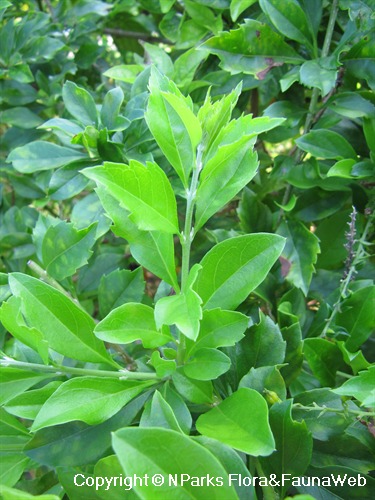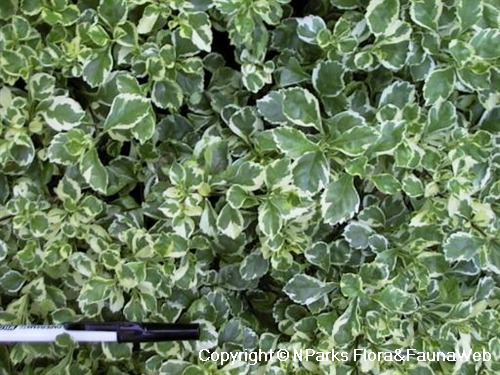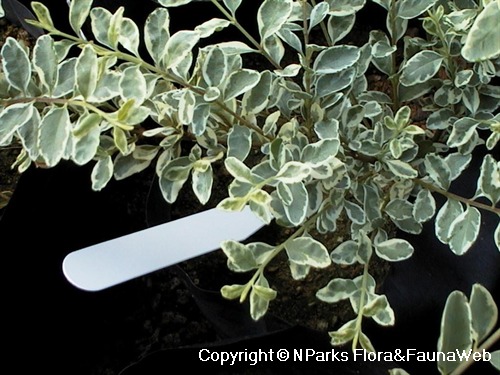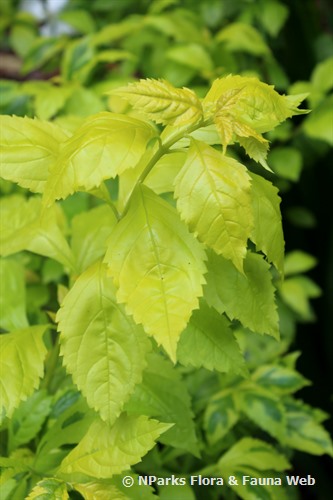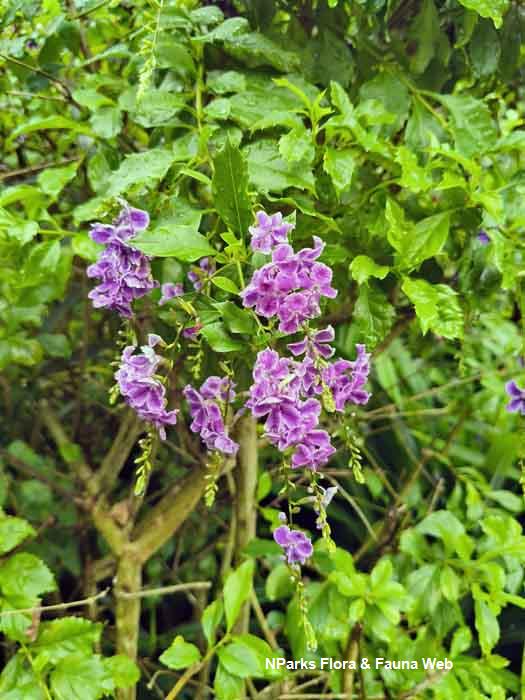
Back
Duranta cultivar (dark purple flowers with white edge)
| Family Name: | Verbenaceae |
| Synonyms: | Duranta 'Dark Purple' |
Name
Classifications and Characteristics
| Plant Division | Angiosperms (Flowering Seed Plants) (Dicotyledon) |
|---|---|
| Plant Growth Form | Shrub |
| Lifespan (in Singapore) | Perennial |
| Mode of Nutrition | Autotrophic |
Biogeography
| Native Habitat | Terrestrial |
|---|---|
| Preferred Climate Zone | Tropical |
| Local Conservation Status | Non-native (Horticultural / Cultivated Only) |
Description and Ethnobotany
| Growth Form | Large, evergreen shrub with multiple stems and hanging branches. It has a sprawling growth habit. |
|---|---|
| Foliage | Leaves are ovate with serrate to entire leaf margin (2.5 - 7.5 cm long). |
| Flowers | Tubular, 5-lobed flowers have dark purple petals with a frilly, white edge and centre (1.3 cm wide). Flowers are arranged in terminal or lateral clusters known as racemes (15 cm long). This species is free-flowering. |
| Fruit | Fruits are golden, round to slightly elongated berries (1.3 cm wide). They occur in large, hanging clusters. |
| Cultivation | This fast-growing, low maintenance cultivar may be planted in the ground or large containers. Although it grows and flowers best in full sun, it is tolerant of semi-shade. This cultivar is occasionally attacked by caterpillars, scale insects and nematodes. |
| Etymology | The genus Duranta was named after Castore Durantes, a 16th century Italian botanist and physician. |
Landscaping Features
| Desirable Plant Features | Ornamental Flowers |
|---|
Fauna, Pollination and Dispersal
| Fauna Pollination Dispersal Associated Fauna | Butterfly-Attracting (Flower Nectar), Bee-Attracting |
|---|
Plant Care and Propagation
| Light Preference | Full Sun |
|---|---|
| Water Preference | Moderate Water |
| Plant Growth Rate | Moderate |
Foliar
| Mature Foliage Colour(s) | Green |
|---|---|
| Leaf Area Index (LAI) for Green Plot Ratio | 4.5 (Shrub & Groundcover - Dicot) |
Floral (Angiosperm)
| Flower Colour(s) | Purple |
|---|
Image Repository
Others
| Master ID | 678 |
|---|---|
| Species ID | 1973 |
| Flora Disclaimer | The information in this website has been compiled from reliable sources, such as reference works on medicinal plants. It is not a substitute for medical advice or treatment and NParks does not purport to provide any medical advice. Readers should always consult his/her physician before using or consuming a plant for medicinal purposes. |



